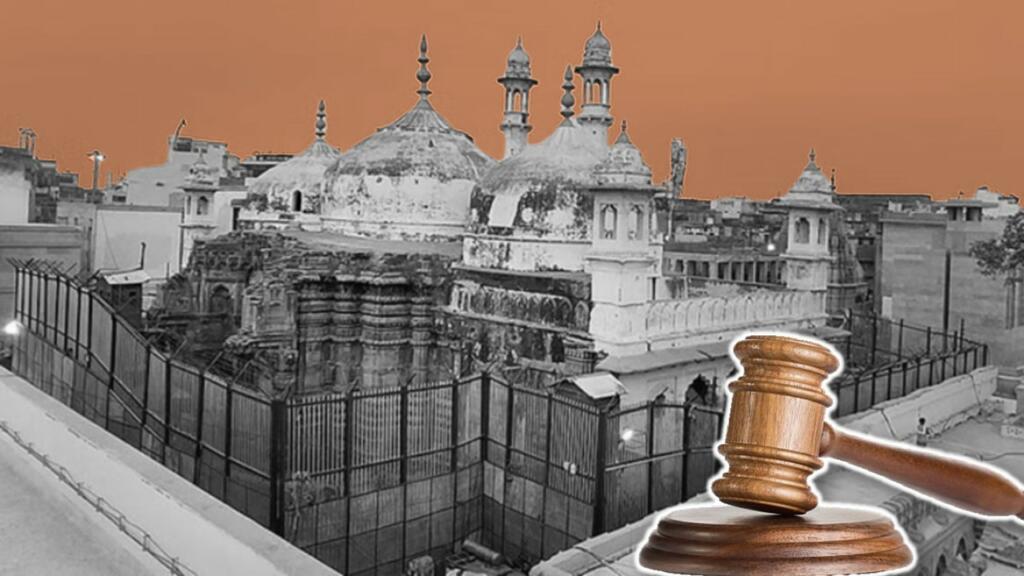The Allahabad High Court has rejected five petitions against the ongoing case for a temple at the Gyanvapi mosque site. These petitions, by the Anjuman Intezamia Masajid Committee and the UP Sunni Central Waqf Board, opposed a 2021 order for a mosque survey. The judgment was reserved in December.
Muslims community is distraught but they have no reasons to.
Isn’t it a fact that Islamist Bigot Aurangzeb replaced Kashi’s Vishvanath Temple with the Gyanvapi mosque in 1669? One must be blind to not notice a mosque with Hindu elements like deities’ artwork and a trishul, unusual for a mosque.
And then there sits Nandi facing the mosque, traditionally aligned with a Shivling, as evidence of a Hindu temple’s prior existence. The mosque’s basement and certain features, like a structure claimed to be a fountain, are further proofs.
As contemporary Muslim scholars shout at the top of their lungs that Muslims never touched a Hindu temples, Islamic chroniclers have extensively documented the actions of Muslim rulers in India, including forced conversions, violence, and temple destruction.
In contrast, Arab nations, traditionally Islamic, are now participating in building Hindu temples, like the significant Hindu temple in Dubai. Compare that with Indian mullahs. Well call it the zeal of the fresh convert.
Despite the availability of advanced non-destructive scientific tools for surveys, radical mullahs often resist these methods. In fact, The Hindu elements inside the mosque were discovered only after the Supreme Court allowed an Archaeological Survey of India (ASI) investigation,
The Skanda Purana describes Gyanvapi, highlighting its spiritual significance. It describes every facet of it. You can grab a copy of the Skanda Purana and observe the Mosque and the temple and the fact that all of it was a temple will be apparent immediately.
What’s preposterous is that the Quran forbids building mosques on disputed sites, yet this has been ignored historically. In fact, there was a prevailing practice of using debris from destroyed Hindu temples to build mosques, the shining example of it is Delhi’s Quwwat ul Islam mosque near Qutub Minar. It was built by Qutbuddin Aibak, and it incorporated materials from Hindu and Jain temples.
Can Islamic scholars justify how destroying temples represents Islam’s victory or glory? Mughal rulers like Jahangir and Aurangzeb were notorious for such acts. Historians believe Aurangzeb’s extreme anti-Hindu stance contributed to the Mughal Empire’s fall, alienating Hindus. He aimed to prevent temple reconstructions, destroying many, including nine significant ones.
The Gyanvapi Temple in Kashi was a target of Aurangzeb’s 1669 decree to destroy non-Islamic religious sites. He converted the temple into a mosque, unusually named with a Sanskrit term, Gyanvapi. Aurangzeb’s attempts to demolish the temple in 1664 were thwarted by Naga Sadhus, but he succeeded in 1669, with a significant loss of life among the Sadhus.
Later, attempts to rebuild the temple were made by Malhar Rao Holkar and the Maharaja of Jaipur but were unsuccessful. Eventually, Rani Ahilya Bai Holkar reconstructed the temple in 1780.
This pattern of temple destruction extended to Delhi’s Kalka Temple, dedicated to Goddess Kali. Aurangzeb ordered its demolition in 1667 because it was a popular Hindu gathering place. The temple was rebuilt after Aurangzeb’s death in 1707. These events highlight a history of religious conflict and the resilience of Hindu culture in preserving its sacred sites.
>>>Click the link to Join Our WhatsApp Channel<<<
The Ayodhya Ram Temple, destroyed by Fedai Khan under Aurangzeb’s orders in 1660, was replaced with a mosque built from its ruins. After centuries, the original temple has been rebuilt, with an inauguration planned for January 2024. This event is highly anticipated by Hindus worldwide.
In Mathura, Aurangzeb demolished the Keshav Rai Temple, the birthplace of Shri Krishna, in 1670. He then constructed a mosque using the temple’s debris.
The Somnath Temple in Gujarat faced Aurangzeb’s wrath in 1706. He ordered its destruction to eradicate idol worship, urging complete demolition.
Despite these challenges, Hindus have persisted in rebuilding their sacred sites, particularly after Aurangzeb’s death in 1707. This period saw the reconstruction of numerous Hindu temples, showcasing resilience and devotion.
Now when, because it is a question of when and not if, Indian courts rule in favor of Hindu claims on disputed religious sites, there will be loud wailings. Indian mullahs will claim victimhood, alleging that Muslims are unsafe in India, possibly leading to street riots. In Pakistan, there will be retaliatory attacks on Hindu temples and communities. Politically, parties like Congress and international groups will criticize BJP, Modi, RSS, and Hindus.
You cannot stop an idea whose time has come and the resurgence of Hindutva is that idea whose time has truly arrived. No amount of bangle breaking can stop that.
Support TFI:
Support us to strengthen the ‘Right’ ideology of cultural nationalism by purchasing the best quality garments from TFI-STORE.COM
